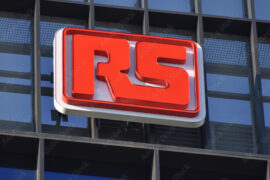Churchill once said ‘never waste a good crisis.’ COVID has been devastating for the many families who have been bereaved, for the economy and for individuals. Nevertheless, it isn’t too soon to look ahead, writes Steve Rawlins , CEO of Anglia (pictured).
. To survive and thrive, businesses including ours cannot just snap back to the way we were before the pandemic, but need to use this crisis to reinvent themselves, to be more resilient, adapting their operational models to the ‘new normal’. Specifically, we as an industry need to look at how we operate, and seek to build supply chains that are robust as well as financially sustainable for everybody to reduce the risk levels for all.
Coronavirus has exposed the fact that our ‘streamlined’ just-in-time supply chain from component manufacturer to customer is now too fragile. We’re being caught out too often not only by epidemics but also by earthquakes, volcanic eruptions and strikes. Customers and manufacturers often have no inventory, and many distributors carry as little as possible. That’s fine in an ideal world, but not in the real world we actually live in.
Truthfully, distributors are best placed to support the whole supply chain through temporary hiccups with inventory, because we have the relationships which bring understanding of customers and suppliers demand patterns and business drivers.
At Anglia, we operate with a stock turn of one and hold inventory at a level of 50% of our annual sales. This is five-six times the level of the industry norm – but we are a stronger business for it.
This year, Anglia was ranked for the first time on the 21st annual Sunday Times Profit Track based on its financial performance over the last three years.
We benefit from holding a larger, effectively managed inventory, not least because we can often continue supply when our competitors stock is exhausted.
However, holding inventory carries with it a degree of risk and element of cost. I’ve described how effective distributors can manage that risk and reduce that cost: but we can’t get rid of it altogether.
While it’s on your shelf, stock will cost you money: in terms of the interest on the capital that’s tied up, and the cost of the facility in which it is housed. There is always the chance that you end up with stock that you can’t sell, or need to dispose of at a loss.
Maintaining a higher level of stock to support the supply chain through a crisis represents added value to both customer and supplier – value that needs to be recognised in terms of the margin that distributors receive.
Right now, the country and the industry has bigger concerns on its mind: not least supporting the rapid production of medical equipment to address the Coronavirus cases that continue to appear as we emerge from the first peak and enter a potential second wave.
Yet at some point, a grown up conversation needs to take place about the management of risk within our supply chain and set up a sustainable, balanced level of inventory, and hold it at a short, overland journey from the customer eliminating the inherently higher risks and costs of airfreight.
We can’t protect all of our customers, all of the time but we should maintain a substantial buffer to insulate them against the inevitable but unpredictable disruptions and spikes that occur.











Comments are closed.